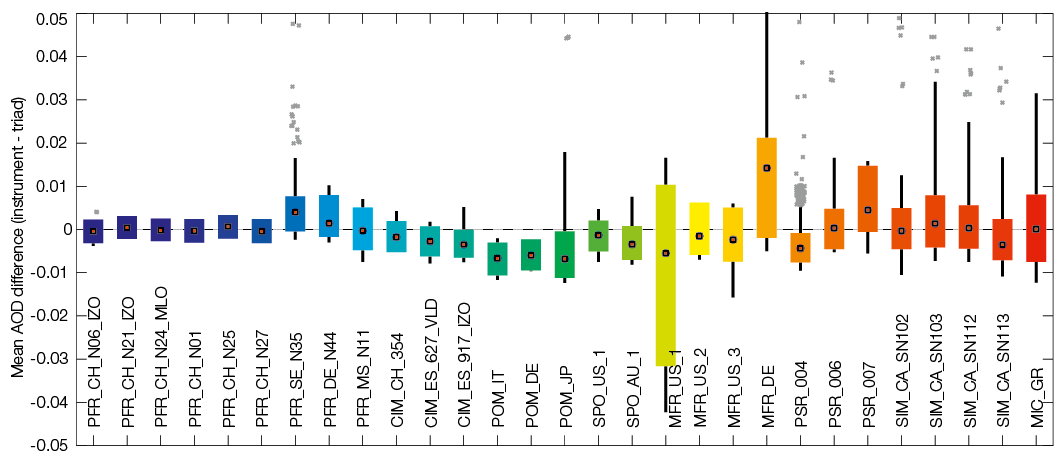Einleitung
Filterradiometer-Vergleiche (FRCs) werden alle fünf Jahre am PMOD/WRC organisiert. Diese AOD-Vergleiche werden unter verschiedenen atmosphärischen Bedingungen durchgeführt, wodurch verschiedene Radiometer, Kalibrierungen und AOD-Software verglichen werden können. Die Hauptfaktoren, die für mögliche Abweichungen in globalen oder nationalen AOD-Netzwerken verantwortlich sind, können somit bewertet werden.
Filterradiometer-Vergleiche
Das PMOD/WRC begann den ersten FRC im Jahr 2000 mit Unterstützung der WMO. Ziel der Kampagne war es, verschiedene Instrumente unterschiedlicher globaler oder nationaler Netzwerke zu vergleichen, um die Hauptursachen für mögliche Abweichungen zu quantifizieren. Ziel der gesamten Aktivität war es, Maßnahmen zur Homogenisierung der AOD-Messungen auf globaler Ebene zu initiieren. Das Vergleichsprotokoll wurde gemäß den WMO-Empfehlungen formuliert. Die Messungen jedes Instruments wurden mit der Triade des Precision Filter Radiometer (PFR) verglichen.

